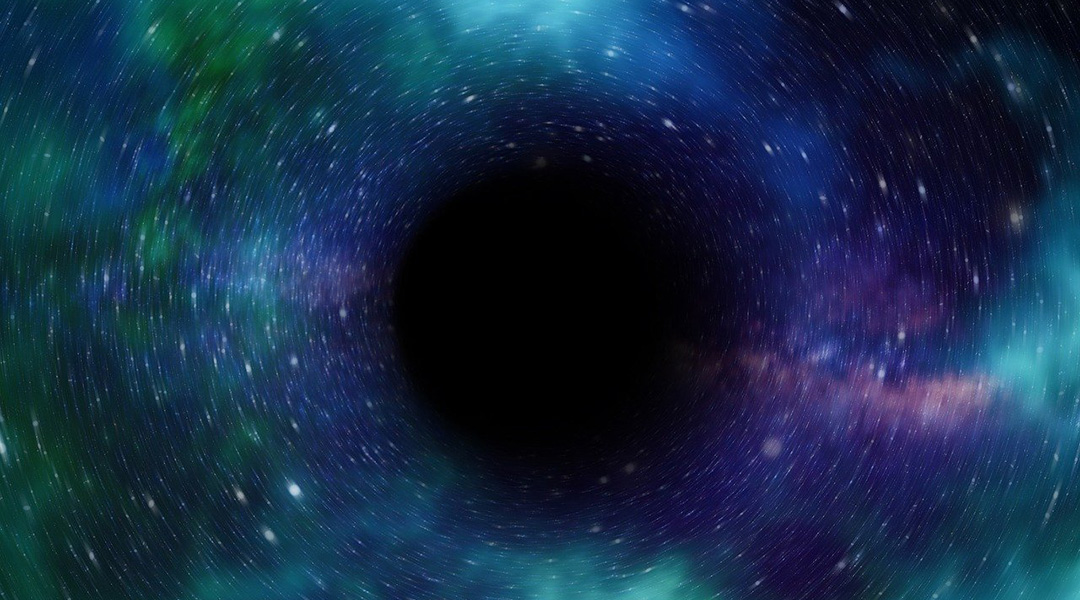The new findings contradict most observations of supermassive black holes, making this an unprecedented discovery.
Recent analysis of data collected by the James Webb Space Telescope (JWST) has unveiled a distant galaxy harboring a supermassive black hole with an unexpectedly large mass. This discovery challenges prevailing theories of galaxy formation, hinting at a need to rethink our understanding of how black holes interact with matter as galaxies evolve.
The international research team led by Lukas Furtak and Adi Zitrin from Ben-Gurion University of the Negev were able to take a detailed look at the galaxy Abell 2744-QSO 1 thanks to the help of a nearby galaxy cluster called Abell 2744, which lies between Earth and the target galaxy.
A gravitational lens to get better data
The massive Abell 2744 cluster acted as a gravitational lens, bending light from Abell 2744-QSO 1 in such a way that three separate images were created. These three images are duplicates of the same galaxy, but they appear in different locations in the sky due to this gravitational lensing effect.
Each provides valuable information about the distant galaxy, providing substantially more detail than what JWST would have been able to obtain alone.
“We were very excited when JWST started sending its first data,” said Furtak in a press release. “We were scanning the data that arrived for the UNCOVER (Ultra-deep NIRSpec and NIRCam ObserVations before the Epoch of Reionization) program, and three very compact [red] objects prominently stood out and caught our eyes.”
Their analysis revealed a central supermassive black hole for which they estimate the size and total mass of the galaxy. This lead to a startling conclusion: the black hole’s mass, which is 30 million times that of our Sun, accounted for a very large fraction of the mass of the entire galaxy, far exceeding the typical values found in older galaxies where they make up less than 0.1% of the galaxy’s total mass.
“All the light of that galaxy must fit within a tiny region the size of a present-day star cluster,” said Jenny Greene from Princeton University and one of the lead authors of the study. “The gravitational lensing magnification of the source gave us exquisite limits on the size. Even packing all the possible stars into such a small region, the black hole ends up being at least 1% of the total mass of the system.”
However, the discrepancy may be even greater: The JWST data doesn’t rule out that the black hole could even be as massive as the rest of the galaxy — an unprecedented discovery.
A chick and egg situation
Not only does this contradict most observations of supermassive black holes, but it is also inconsistent with our current understanding of the formation of galaxies and supermassive black holes residing within them.
To verify that this contradiction indeed exists, the researchers simulated the galaxy’s evolution, assuming the black hole originated from a massive star with a mass of approximately 150 solar masses. The numerical analysis indicated that the observed black hole’s mass exceeded expectations at least tenfold.
“In a way, it’s the astrophysical equivalent of the chicken and egg problem,” said Zitrin. “We do not currently know which came first — the galaxy or black hole, how massive the first black holes were, and how they grew.”
While this finding contradicts many observations, it aligns with some observations of similarly aged galaxies, albeit done with lower accuracy due to the absence of gravitational lensing.
“In fact, several other supermassive black holes in the early universe have now been found to show a similar behavior, which lead to some intriguing views of black hole and host galaxy growth, and the interplay between them, which is not well understood,” said Greene.
This growing body of evidence challenging established theories suggests a need to revise our understanding of some of the most fundamental cosmic processes. Fortunately, JWST continues to gather data on early universe galaxy evolution, offering hope for resolving these contradictions in the near future.
Reference: Lukas J. Furtak, et al., A high black hole to host mass ratio in a lensed AGN in the early Universe, Nature (2024). DOI: 10.1038/s41586-024-07184-8.
Feature image credit: geralt on Pixabay












+ There are no comments
Add yours